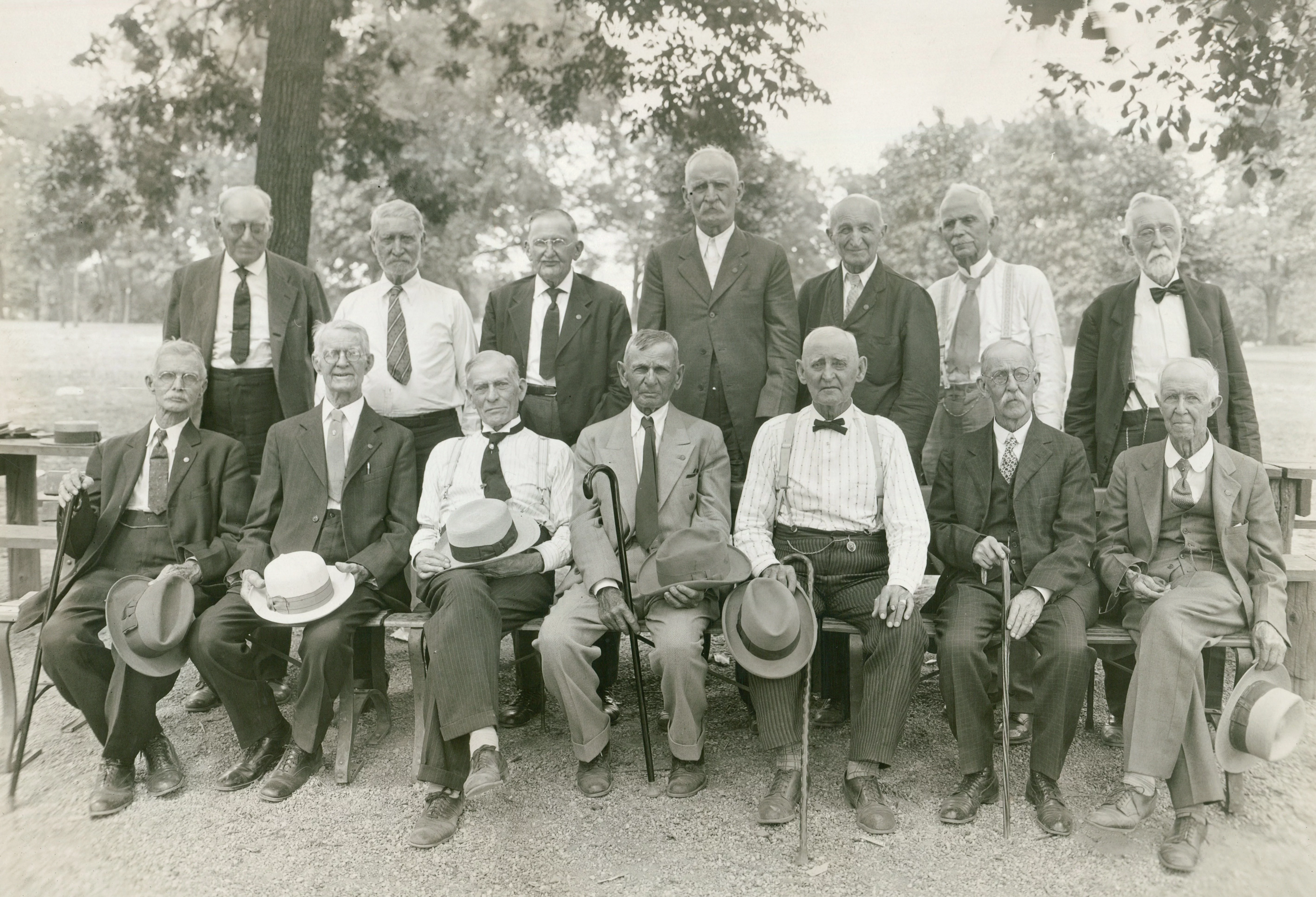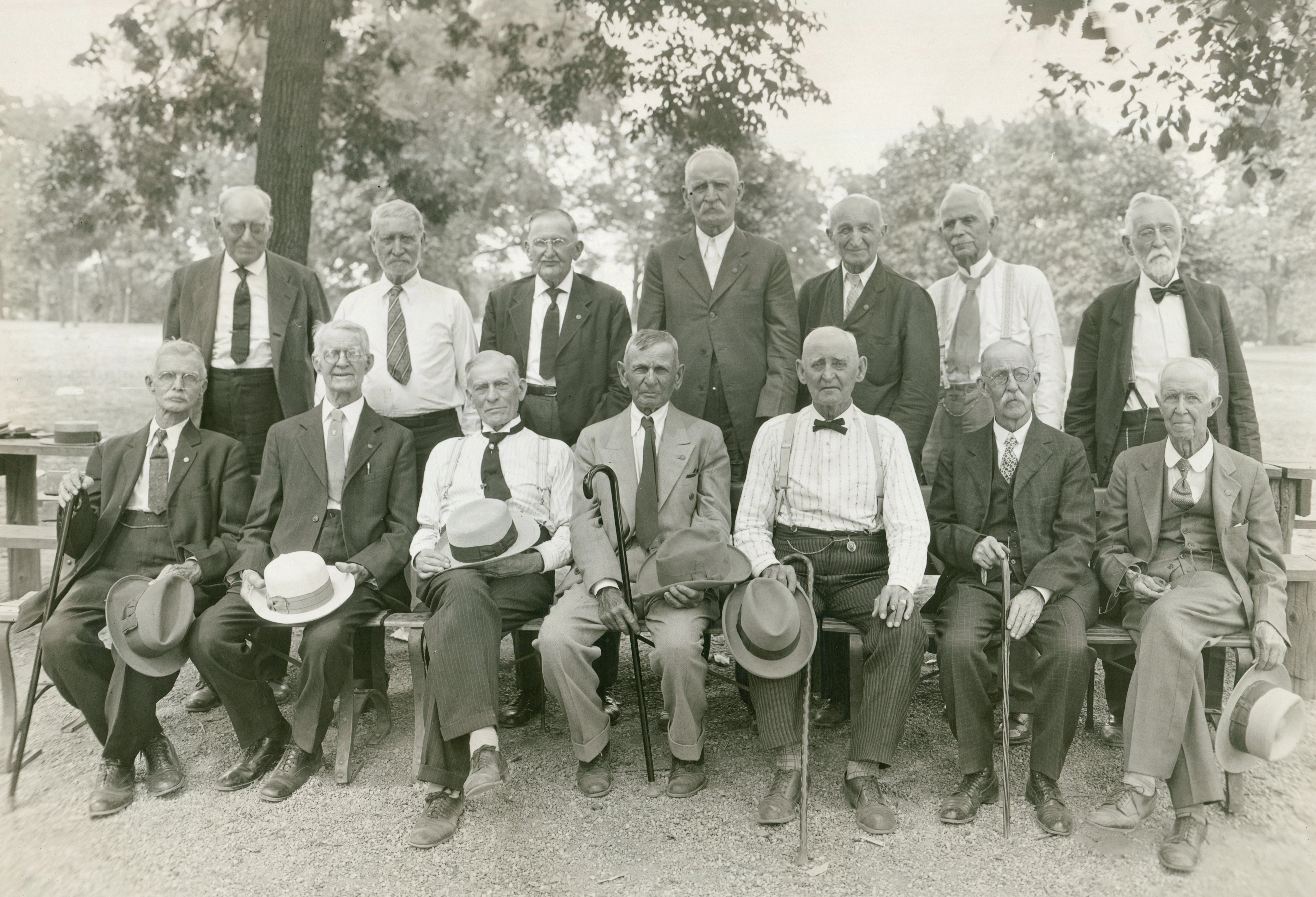Today the median age of Korean War veterans is 88 years old, and as the ranks of these old soldiers get increasingly thinner there will soon come a day when they will all be gone.
During the Great Depression, Americans faced a similar inexorable loss and poignant farewell.
In March 1936, the closing of Bloomington-Normal’s last Grand Army of the Republic (GAR) post signaled the coming end of the Civil War generation. The GAR was a fraternal organization of Union veterans that wielded impressive political power in the decades after the war. In 1890, the GAR boasted a national membership of 490,000—nearly half a million veterans. The Bloomington post carried the name of William T. Sherman, the Union commander known for the March to the Sea and the axiom, “War is hell.”
Ninety-five-year-old Bloomington resident Joseph W. Fifer, the local GAR post commander and former Illinois governor, was the only veteran able to attend the rather bittersweet ceremony closing the local post. The three other remaining Bloomington-Normal veterans couldn’t come, given their frail health and limited mobility. Attending were representative of the Sons of Union Veterans of the Civil War (SUVCW) and the corresponding daughters’ organization.
Two months later, The Pantagraph ran photographs of the four living Civil War veterans in Bloomington-Normal: Fifer, Benajah Brigham, Charles Mayo and Aaron Will. All had been members of the William T. Sherman GAR post.
Less than a year after the post closed its doors for good, Aaron Will became the first of the final four veterans to leave this “vale of tears” behind. He died February 28, 1937, at the home of his daughter, Grace Protzman, 809 S. Allin St. A 92-year-old Will had served in the 133rd Pennsylvania Regiment and saw action at Fredericksburg and elsewhere. He came to Bloomington after the war and worked in the dry goods business for more than 60 years.
A 96-year-old Charles Mayo, who served three years in the 79th Illinois Infantry Regiment, died at his home at 601 S. Linden St. (the vacant lot at the southwest corner of Linden and Vernon streets) on February 2, 1938.
Joseph Fifer and Benajah Brigham, believed to be the last two living Civil War veterans in Bloomington, served together in Company C of the 33rd Illinois Infantry Regiment.
During the spring and summer of 1863, Fifer and Brigham were part of Ulysses S. Grant’s epic campaign to take Vicksburg, Miss., the last Confederate stronghold on the Mississippi River. “And so it went in those early days of May—fast marches and a great deal of the ugliest kind of fighting,” Fifer recalled. “It was no place for the laggards or the give-outs.” Most of Fifer’s war recollections are matter-of-fact. For instance: “I shall never forget the cannonade in mid-May when a shell cut off the head of the captain of our company—Captain [Henry M.] Kellogg, who had come into the war from the superintendency of a seminary for girls.”
Yet even his more picturesque descriptions of that campaign ring true. “It was mid-May now, and the magnolia trees were in bloom, and the roses and lilies and myrtles,” he said. “So much beauty—and so much blood and pain, and the weary marches. It was hard to understand why so fair a world should not produce a race that could get on with itself.”
On May 22, the 33rd’s Company C participated in an assault on the formidable Confederate works at Vicksburg. A small force following the lead of 8th Indiana’s Col. David Shunk made it as far as the Rebel’s first line of defensive works. Three Company C soldiers were killed in the assault while several wounded, including Brigham. In the fighting that month, 33rd casualties totaled 19 killed and 102 wounded, 10 if whom would die “in hospital.”
Grant starved out Vicksburg and the fortress-like city fell on July 4, 1863. There was little time for celebration though as Confederate Gen. Joseph E. Johnston began menacing Grant from the east. In a July 13 engagement near the burned-out Mississippi state capital of Jackson, Fifer was shot through the lung and liver. Though nearly given up for dead, he survived and was back with Company C the following spring.
Fifer mustered out in October 1864 while his brother George, also in the 33rd, remained behind only to die of wounds from a clash at Fort Esperanza, Tex.
Fifer settled in Bloomington where he studied law at Illinois Wesleyan University. In 1888, the former enlisted man ran for governor, earning the nickname “Private Joe” because he defeated six former Union Army officers—three generals, one colonel, one major, and one captain!—for the Republican nomination. He passed away on August 6, 1938, at the age of 97.
During the war, Benajah Brigham, Fifer’s comrade-in-arms, “re-upped” at the end of his three-year enlistment and then remained with the 33rd through the war’s conclusion, attaining the rank of sergeant.
When the war was over, he farmed in Blue Mound Township in east-central McLean County, and in 1868 married Elizabeth Sherer. They then moved to Bloomington in 1896 and he kept busy in real estate and insurance dealings. Their children included William B. Brigham, a superintendent of McLean County schools, local historian and amateur archaeologist.
In Brigham’s final years, The Pantagraph would pay an annual call to old soldier’s residence, 706 E. Bell St., on the occasion of his November 3 birthday. The usual order of the day included a family dinner around noon and visits from friends and well wishers. For his 97th birthday in 1937, he predicted a coming war in Europe and his belief that France would once more take it on the chin. In early November 1939, the still-alert Brigham was described as being in good health. “Still actively studying the newspapers, this man who has lived almost a century keeps up on world affairs,” noted The Pantagraph.
The end for Brigham came on August 5, 1940, almost exactly two years after Fifer’s death. Brigham was laid to rest with full military honors at what is now Evergreen Memorial Cemetery in Bloomington.
“This is a sad occasion for all of us,” said a Legionnaire and World War I veteran after Brigham’s funeral. “It’s a grim reminder that soon we’ll be fading away like those veterans who were numerous only a short time ago.”
It’s believed that Brigham was the last Civil War veteran in the Twin Cities, but not in McLean County. There was, for instance, John F. Eddings, who passed away in his hometown of Arrowsmith on May 8, 1941. The 98-year-old Eddings had served in the 40th Illinois Infantry Regiment, though whether he was the last living “Boy in Blue” in the county is not known.
Nationally, the last confirmed living Civil War veteran was Albert Henry Woolson, who was around 15 years old in 1865 when he enlisted in a Minnesota artillery regiment as a company drummer. He died on August 2, 1956, at the likely age of 106.

